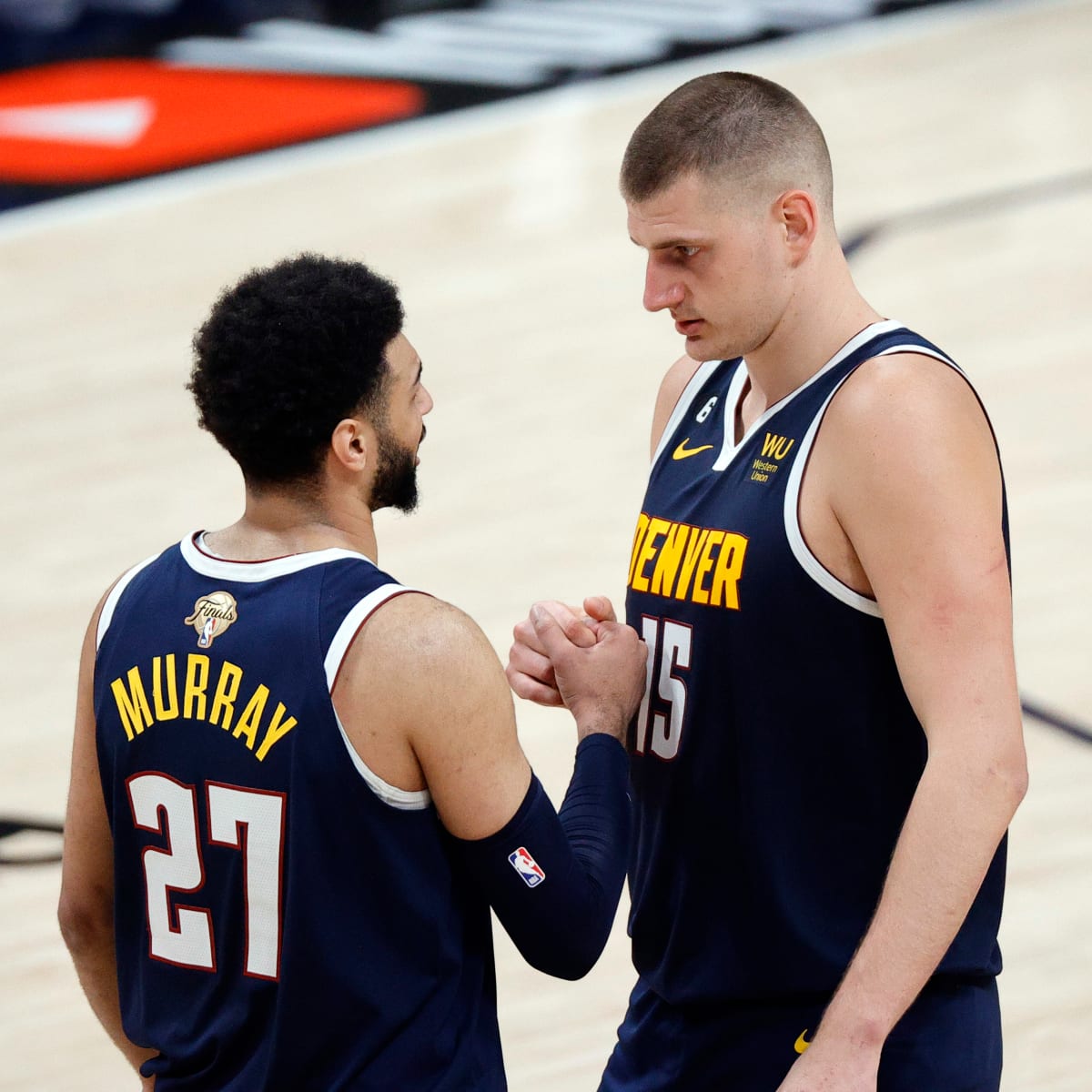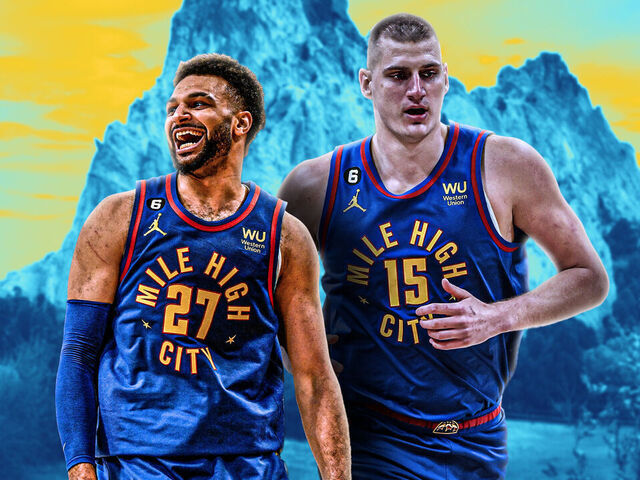Nikola Jokic and Jamal Murray started as reserves for the Denver Nuggets in the early 2016-17 season, with Murray being a rookie and Jokic in his second year. Those with a keen eye noticed early on the potential for this duo to become one of the NBA’s top 1-2 combinations.
“They’re both dynamic,” said Heat coach Erik Spoelstra before the NBA Finals, which commence on Thursday (8:30 p.m. ET, ABC). “They can both excel independently, but they also complement each other remarkably well. It’s rare to find two top players who enhance each other’s game like they do. They’ve both scored 50 points in a playoff game and can serve as facilitators.
“I don’t think either of them are concerned with how many points they score. They focus on getting the most efficient shot for the team.”
In Denver’s sweep of the Los Angeles Lakers in the Western Conference finals, Jokic averaged a triple-double with 27.8 points, 14.5 rebounds, and 11.8 assists. Murray averaged 32.5 points, including consecutive 37-point games, with 6.3 rebounds and 5.3 assists, shooting 52.7% from the field, 40.5% on three-pointers, and 95% on free throws against a strong Lakers defense.
“Nikola Jokic deserved the Western Conference finals MVP last round,” Nuggets coach Michael Malone said. “He fully earned it by averaging a triple-double. And what Jamal did in the Western Conference finals, in a sweep, was incredible.”
Even if the Lakers managed to limit one of them, stopping both proved difficult. Ultimately, either Jokic or Murray—or sometimes both—ignited Denver’s offense. The Nuggets boast the best offense in the playoffs, averaging 119.7 points per 100 possessions, and were fifth during the regular season with 116.8 points per 100 possessions.
With Jokic and Murray on the floor simultaneously, the Nuggets’ scoring rises to 123.4 points per 100 possessions. It has taken several seasons, filled with highs and lows, for Jokic and Murray to develop into the formidable duo they are today.
In the 2016-17 season, Murray and Jokic shared the court for 720 minutes, averaging about 10.1 minutes per game, and Murray began to sense a growing connection.
“We would actually come into the game together and run post-ups or simple give-and-go plays,” Murray recalled. “We executed them really well, and he used to make a lot of over-the-head passes. That’s when we started to develop our chemistry.
“As we both became starters, we learned to play off each other. We figured out where we liked the ball, when to pass, when to drive, and how to relocate. We picked up all these details over time, playing together for most of our careers.”
Coach Malone experimented with his lineup in 2016-17, at times starting Jokic and center Jusuf Nurkic together. “It did not go as well as we had hoped,” Malone admitted.
On December 15 of that season, Malone moved Jokic to the starting lineup and made Nurkic a reserve.
“That’s when our team really took off,” Malone said. “Jokic became the focal point of everything we did. We realized we had a player around whom we could build an offense, a team, and an organization.
“Then you draft a guy like Jamal …”
Murray moved into the starting lineup in 2017-18 and in 2019-20, the Nuggets advanced to the conference finals in the Orlando bubble. Murray lit up bubble gyms for 50 points twice against Utah, and Jokic, the 41st pick in the second round of the 2014 draft, displayed the skills that eventually earned him MVP in 2020-21 and 2021-22.
The Nuggets had arrived and the rest of the league knew it.